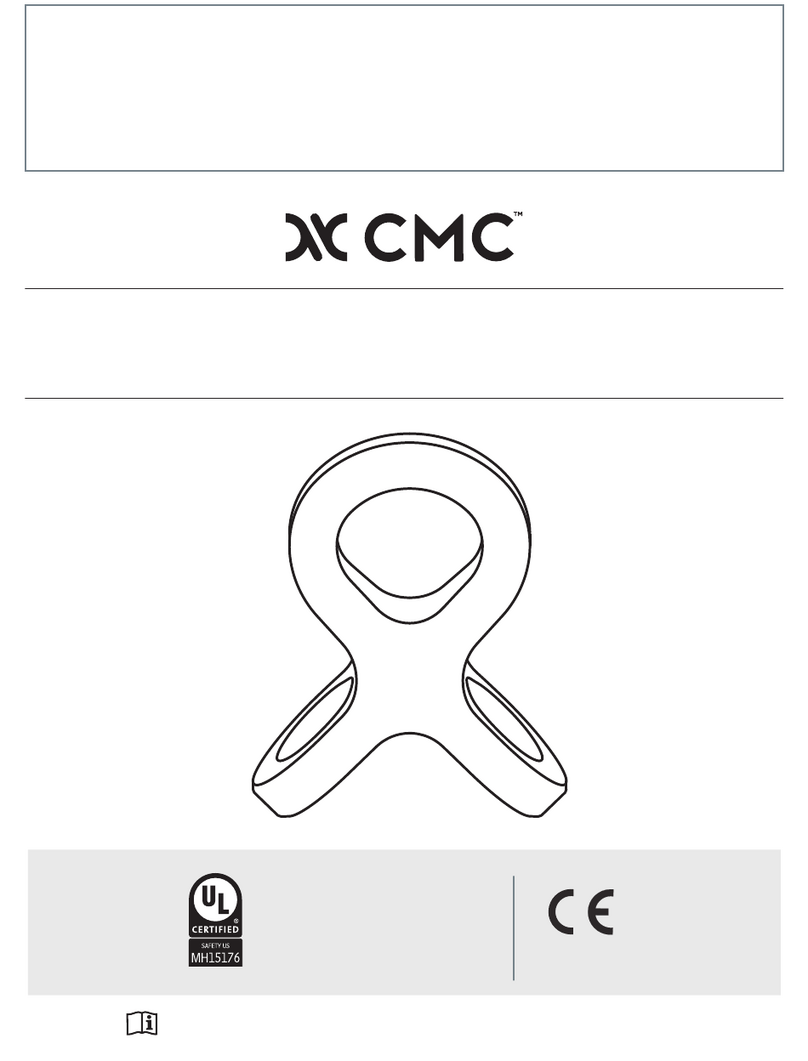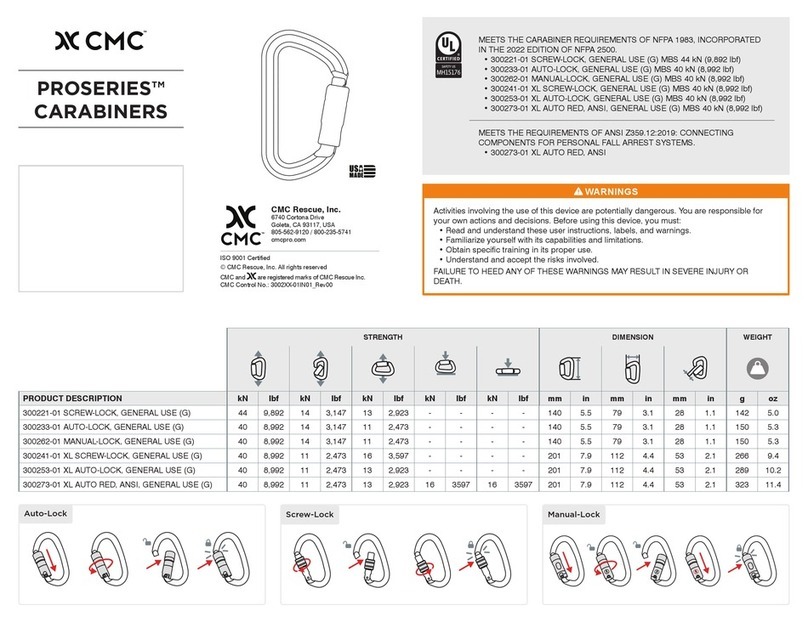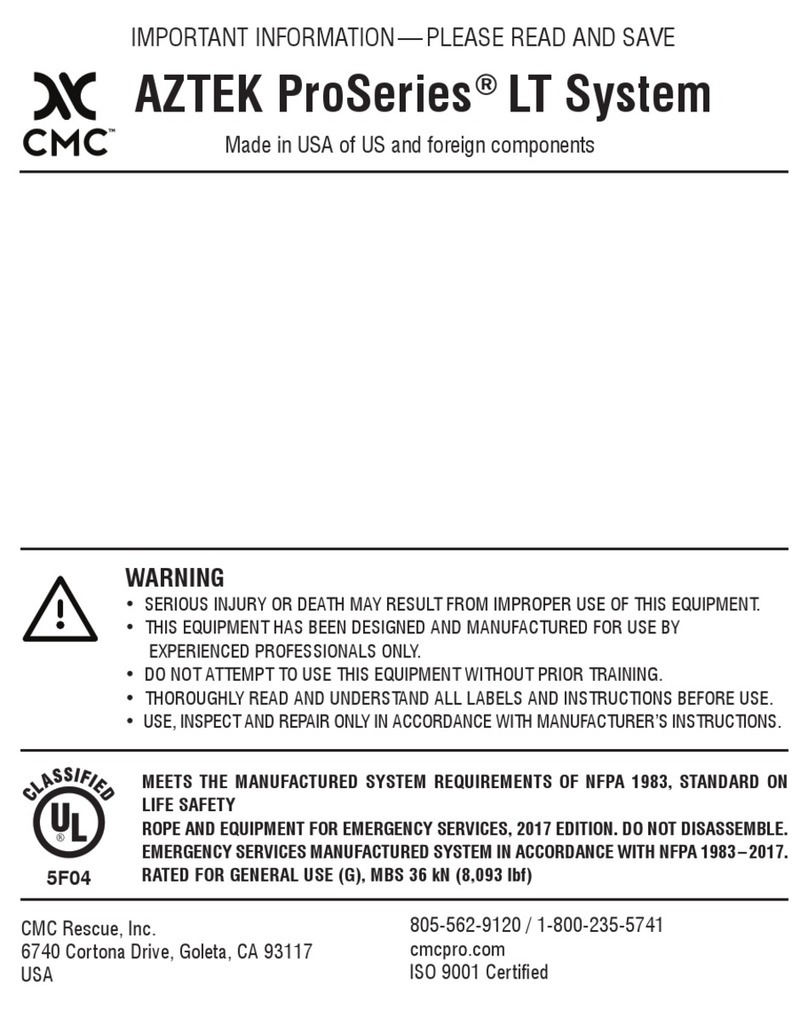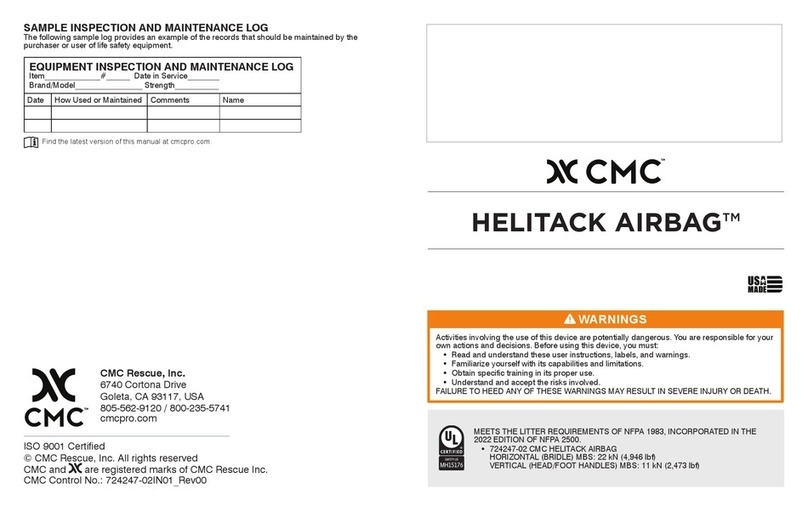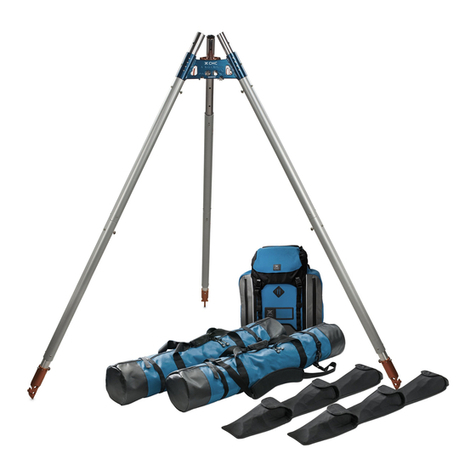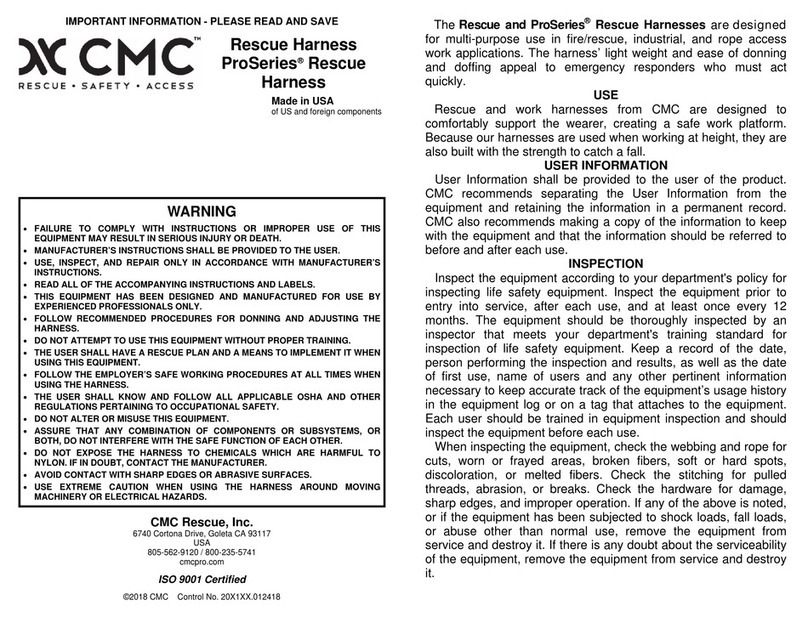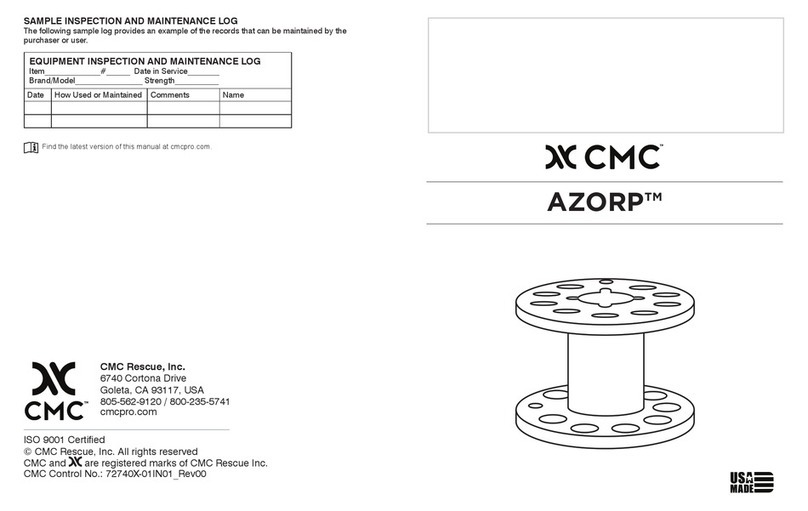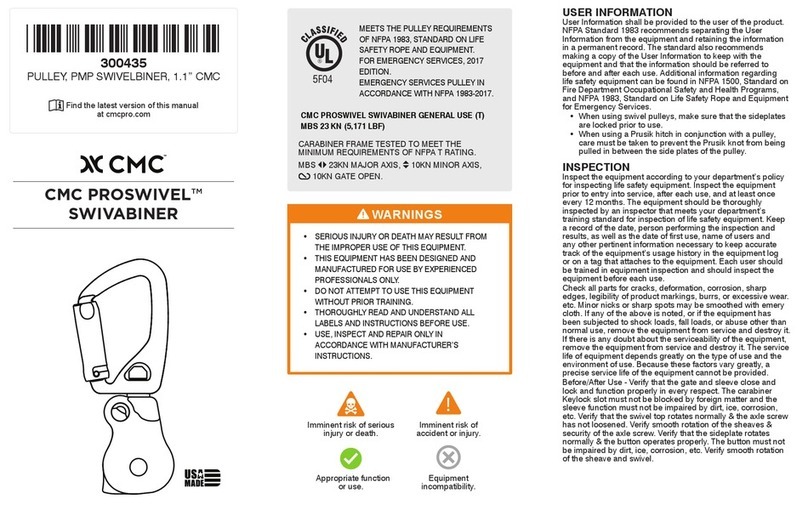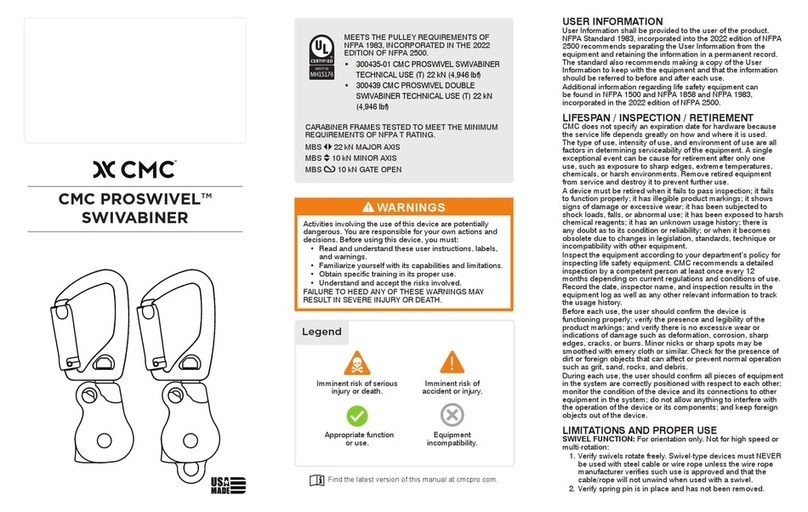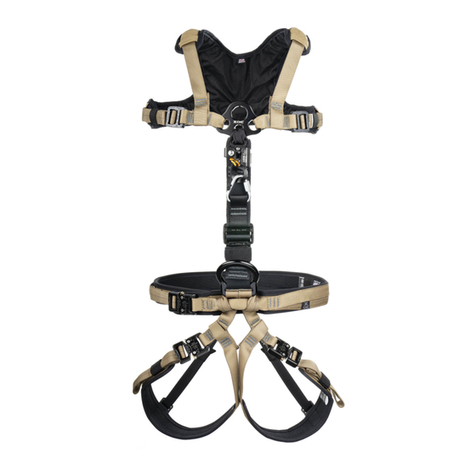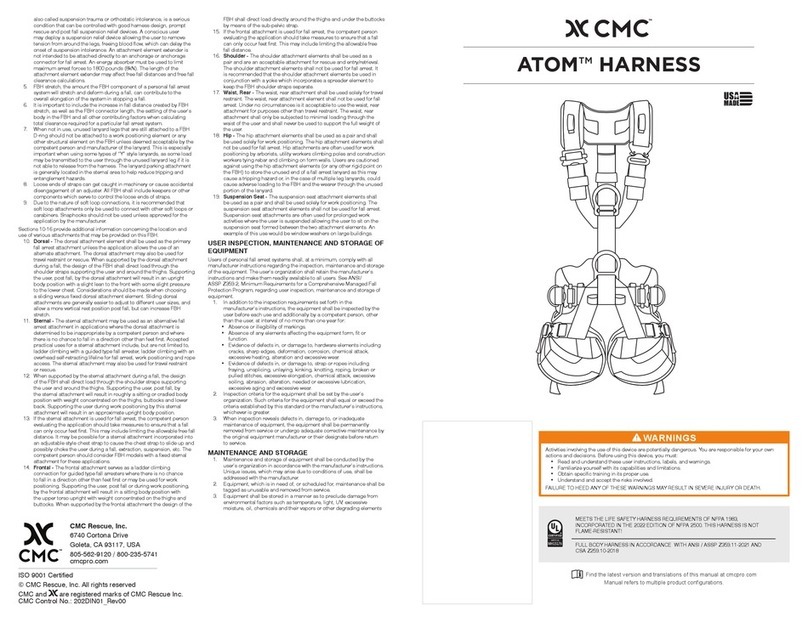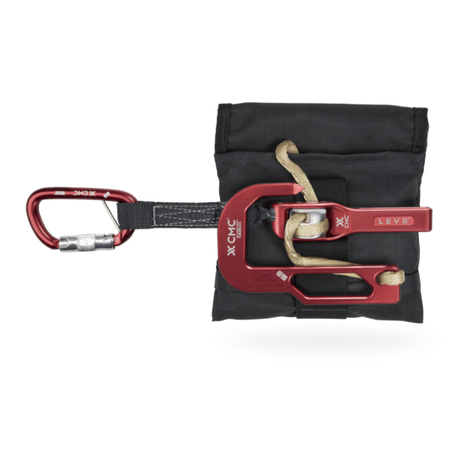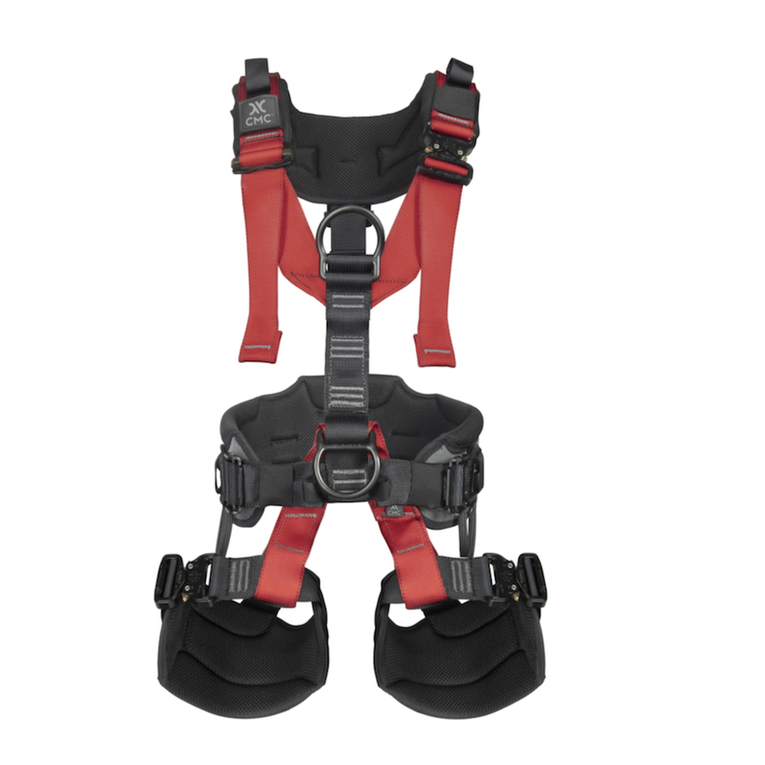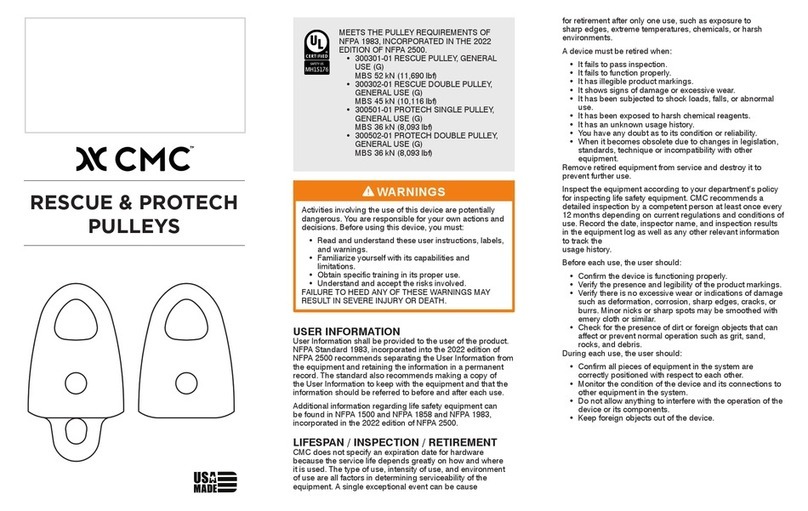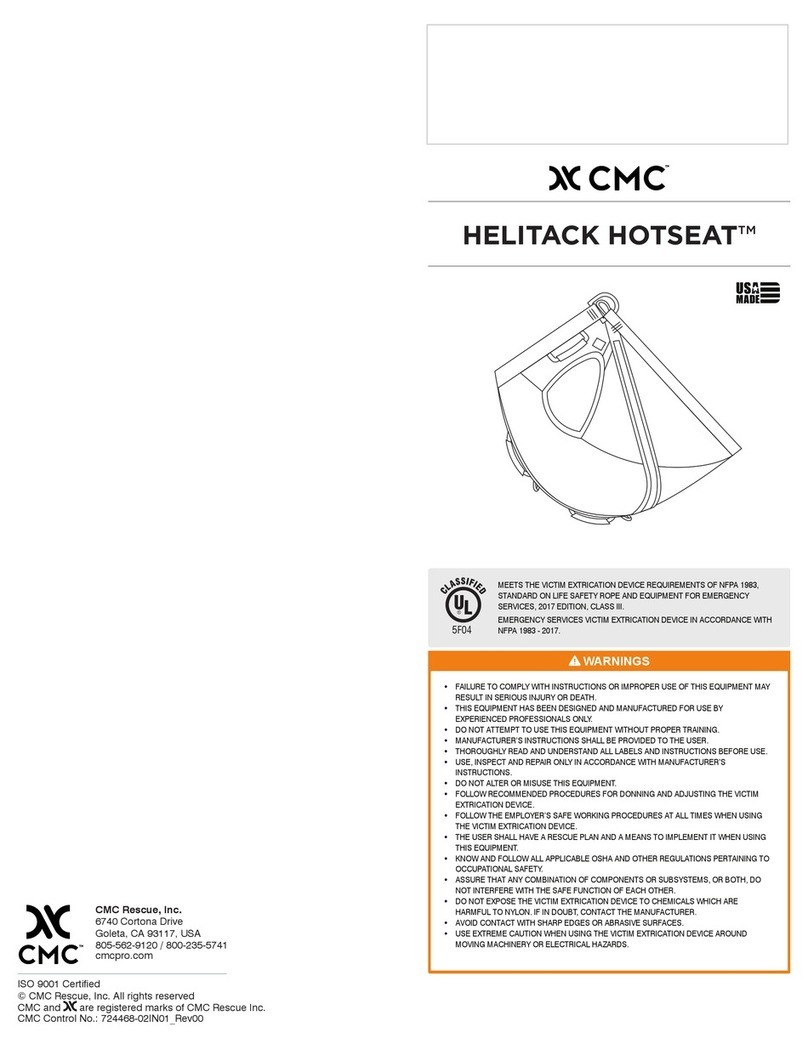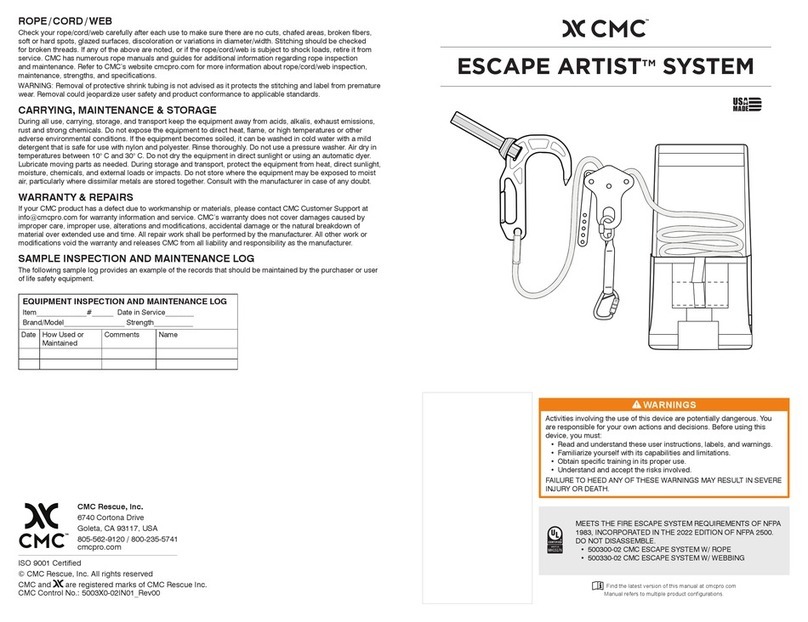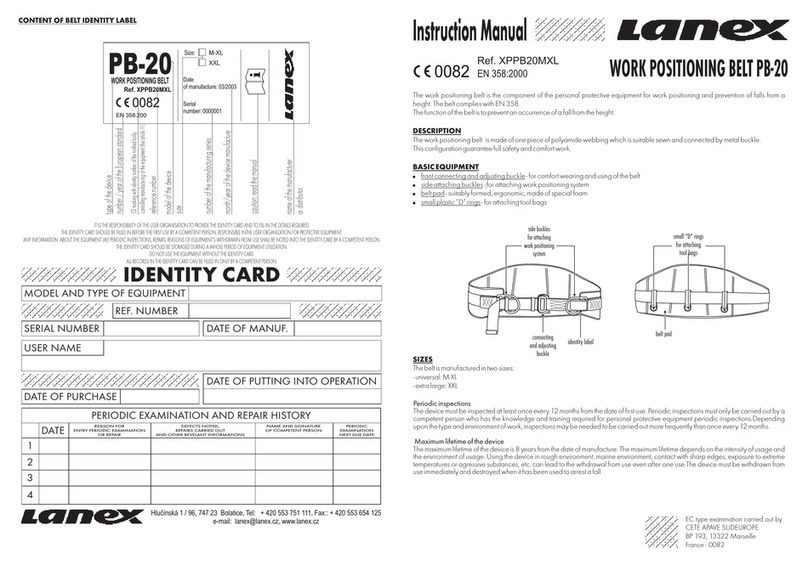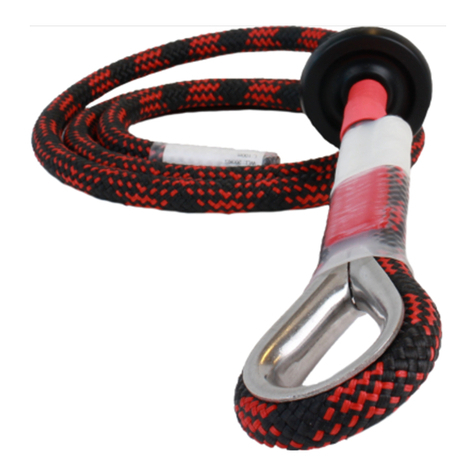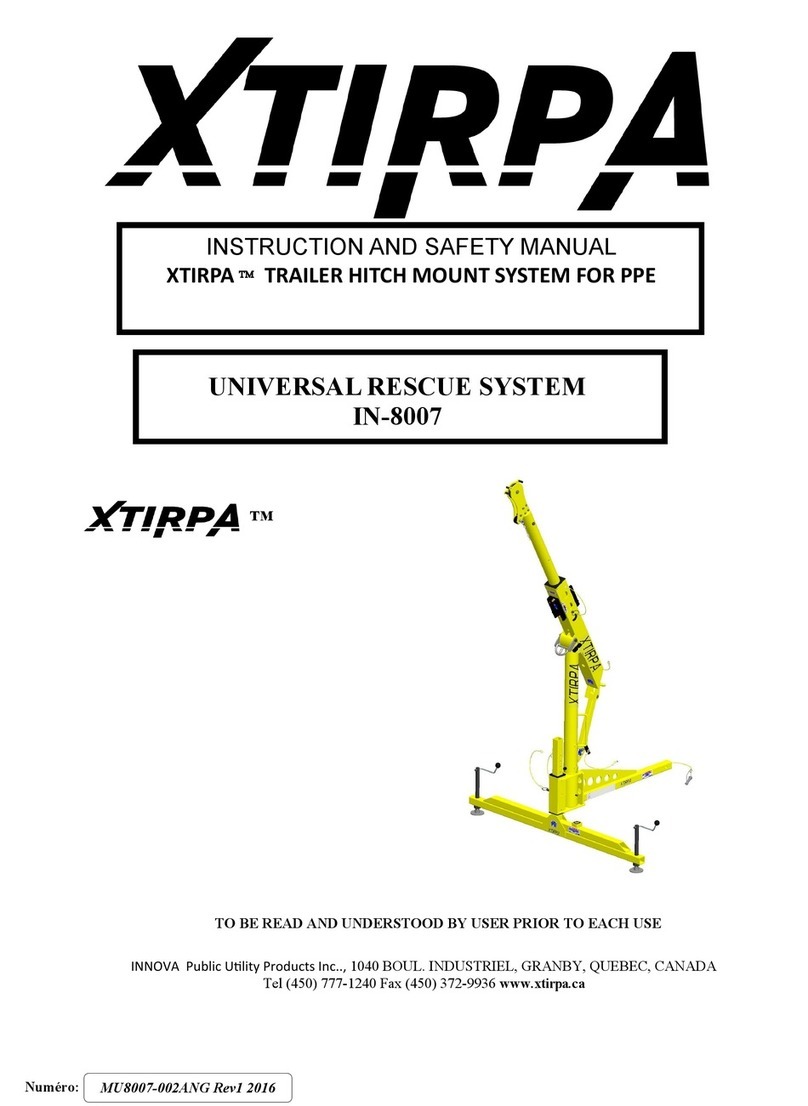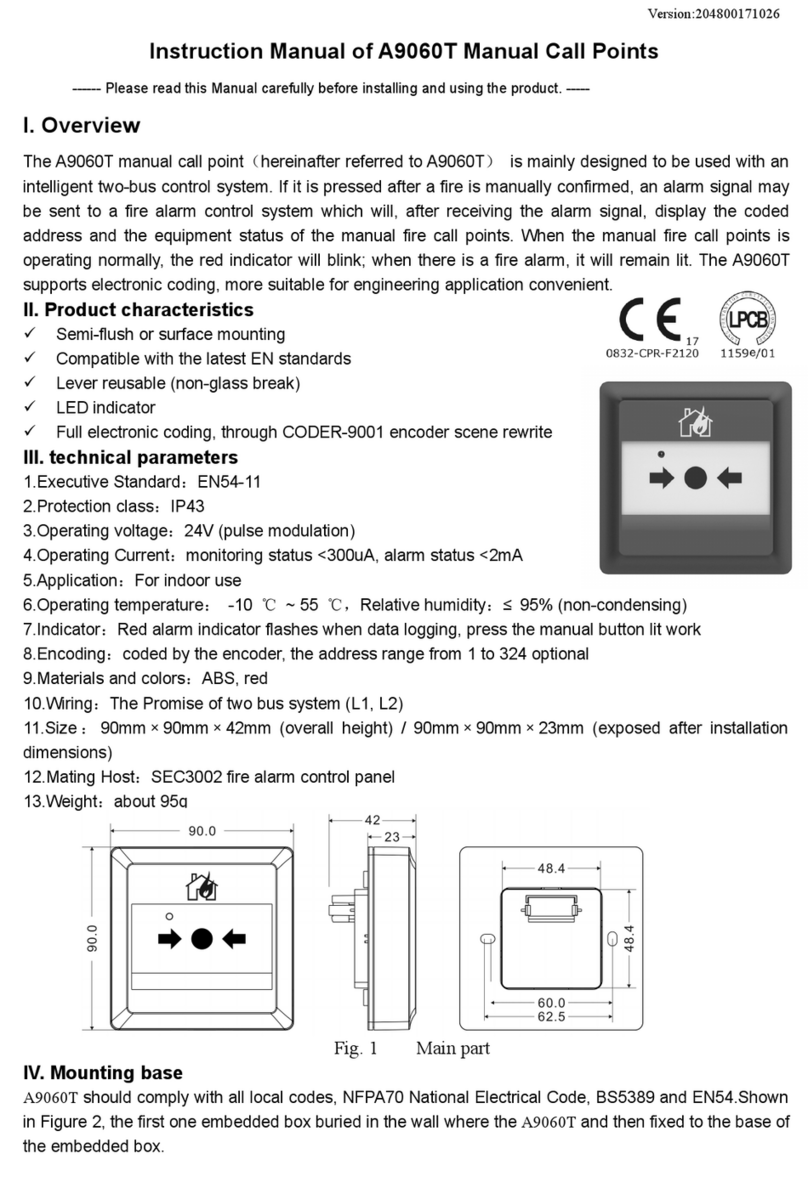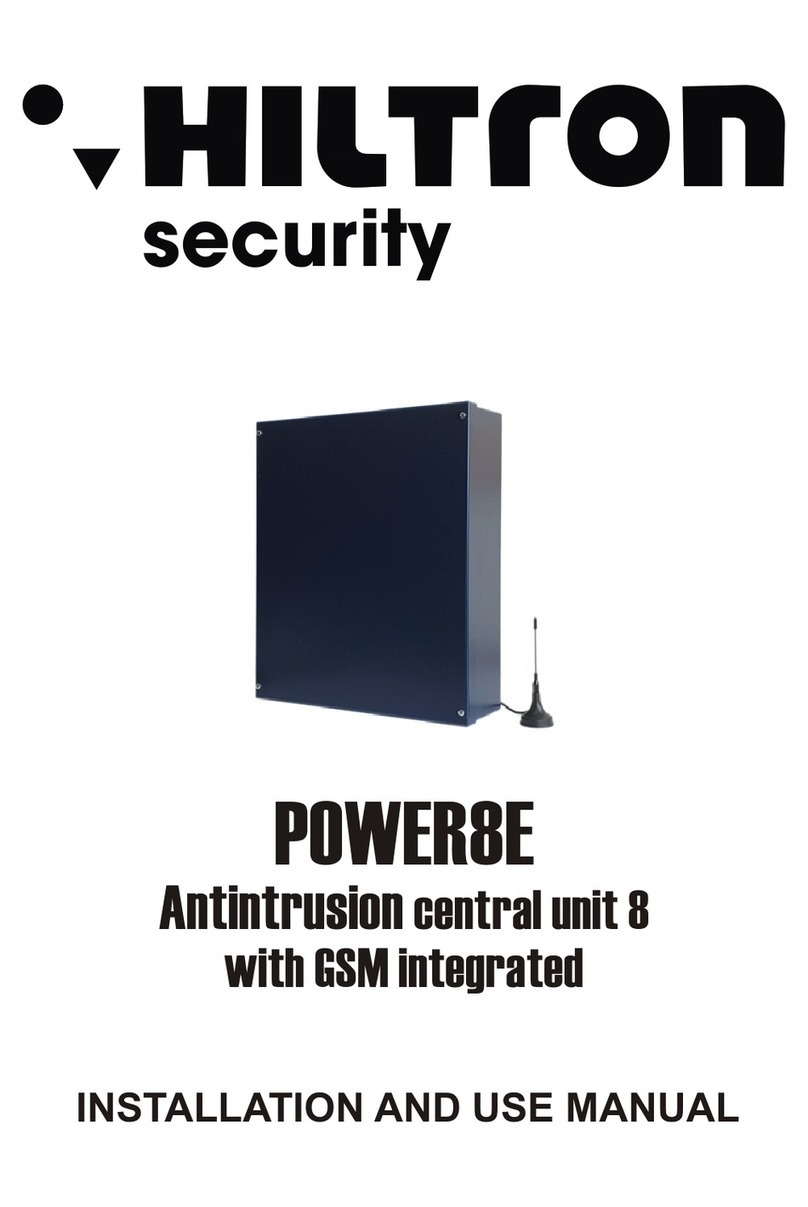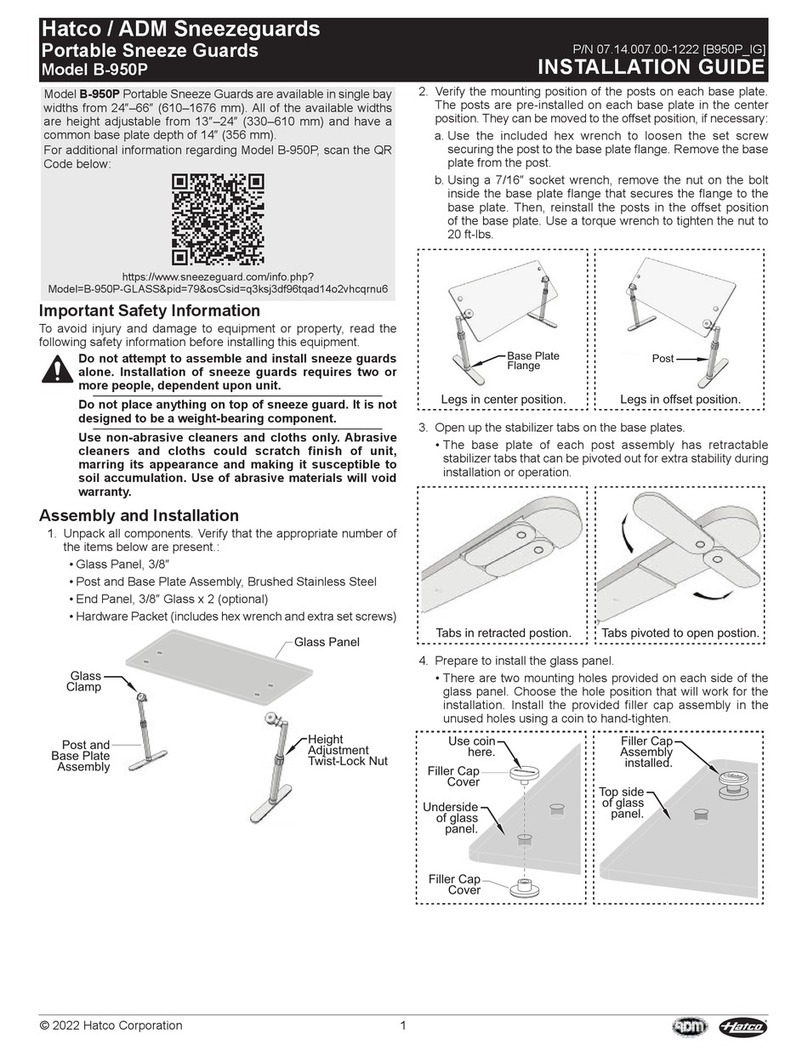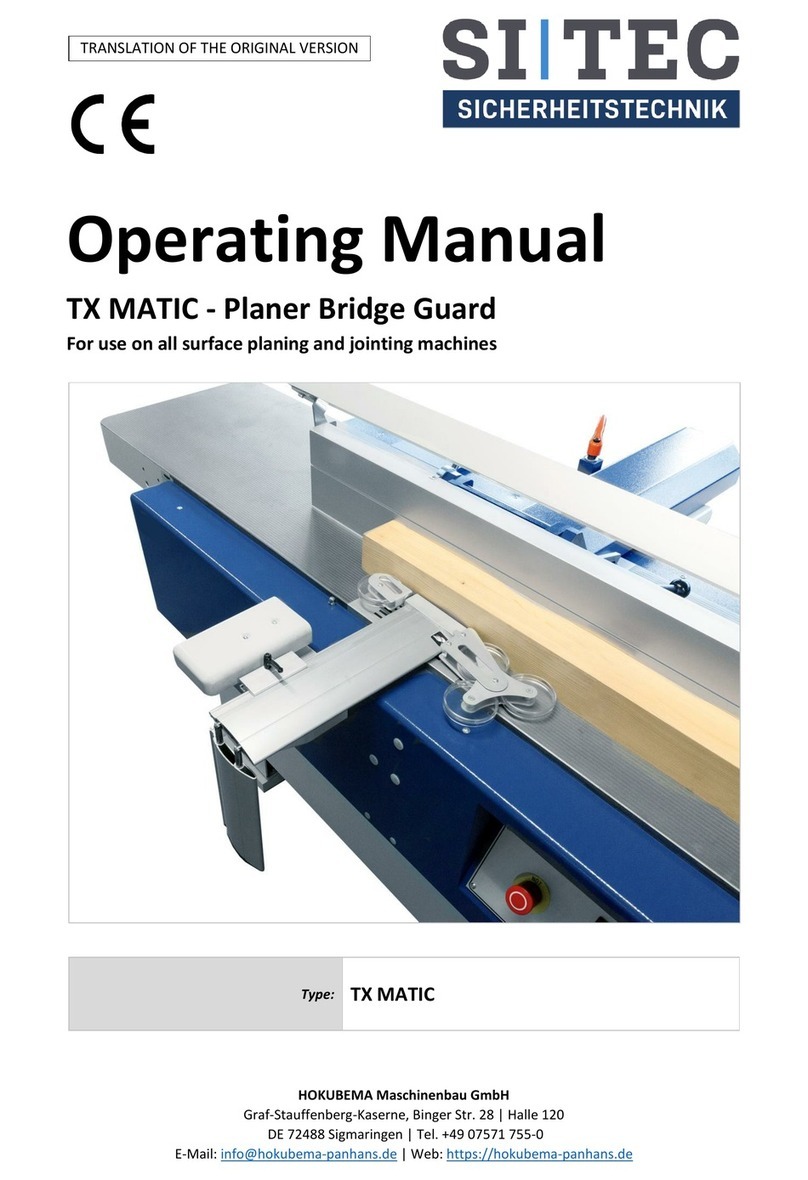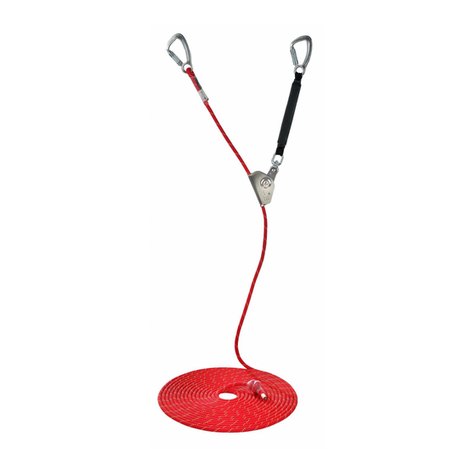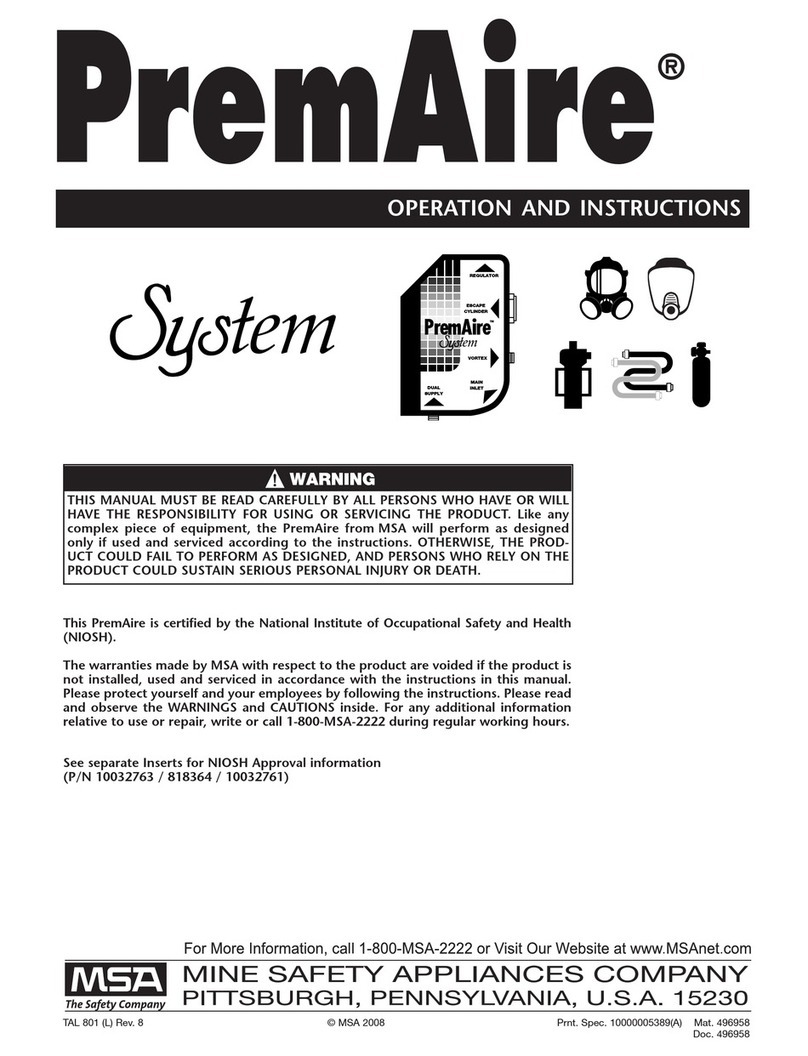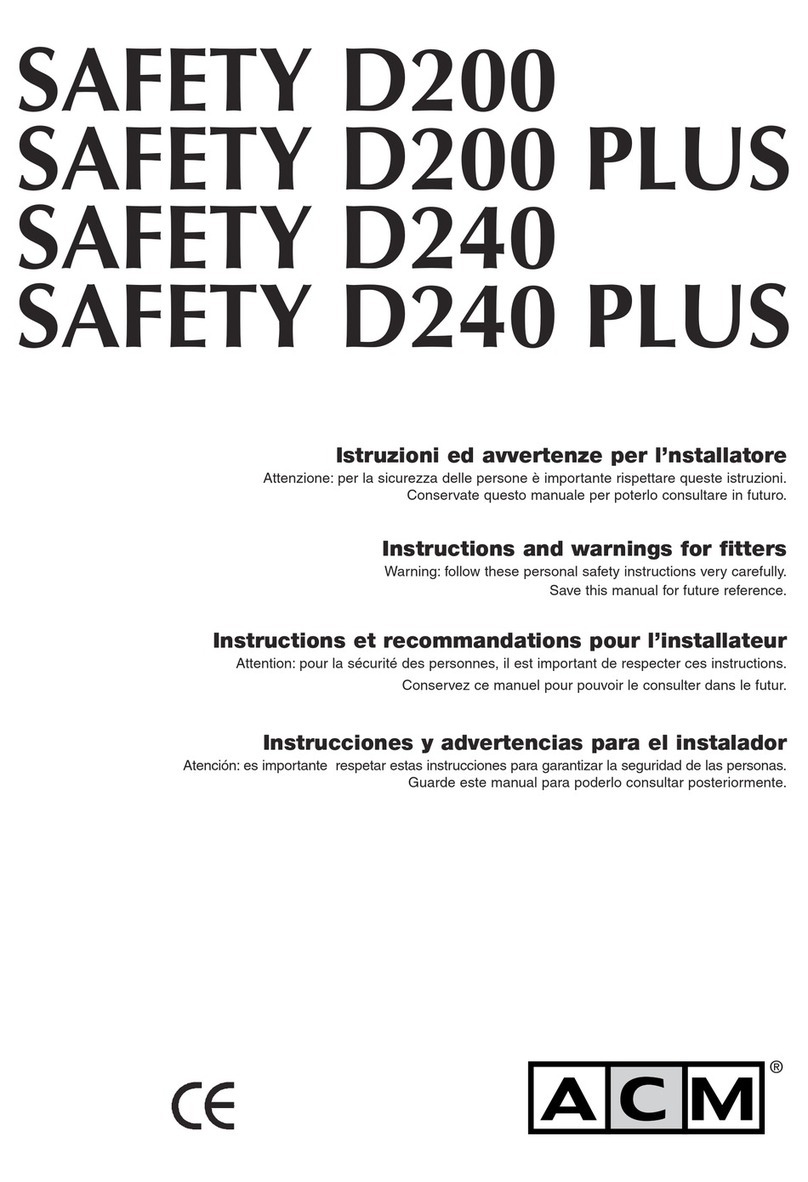
CERTIFICATION AND USE
The HotSeat™is designed to extricate ambulatory
subjects during helicopter hoist or short haul
operations. The rear handle is intended to be used by
a hoist operator to assist in transitioning the subject
inside the aircraft cabin. In the event of an inadvertent
entanglement, the handle is designed to break
away at a force of 2 kN (450 lbf). Avoid connecting
a tether or restraint straps to the rear handle.
USER INFORMATION
User Information shall be provided to the user of the
product. NFPA Standard 1983 recommends
separating the User Information from the equipment
and retaining the information in a permanent record.
The standard also recommends making a copy of the
User Information to keep with the equipment and that
the information should be referred to before and after
each use.
Additional information regarding life safety
equipment can be found in NFPA 1500, Standard on
Fire Department Occupational Safety and Health
Programs, and NFPA 1983, Standard on Life Safety
Rope and Equipment for Emergency Services.
INSPECTION
Inspect the equipment according to your
department's policy for inspecting life safety
equipment. Inspect the equipment prior to entry into
service, after each use, and at least once every
12 months. The equipment should be thoroughly
inspected by an inspector that meets your
department's training standard for inspection of life
safety equipment. Keep a record of the date, person
performing the inspection and results, as well as the
date of first use, name of users and any other
pertinent information necessary to keep accurate
track of the equipment’s usage history in the
equipment log or on a tag that attaches to the
equipment. Each user should be trained in equipment
inspection and should inspect the equipment before
each use.
When inspecting the equipment, check the webbing
and rope for cuts, worn or frayed areas, broken fibers,
soft or hard spots, discoloration, or melted fibers.
Check the stitching for pulled threads, abrasion, or
breaks. Check the hardware for damage, sharp
edges, and improper operation. If any of the above is
noted, or if the equipment has been subjected to
shock loads, fall loads, or abuse other than normal
use, remove the equipment from service and destroy
it. If there is any doubt about the serviceability of the
equipment, remove the equipment from service and
destroy it.
The service life of equipment depends greatly on
the type of use and the environment of use. Because
these factors vary greatly, a precise service life of the
equipment cannot be provided.
DONNING THE HOTSEAT
1. Don the HotSeat in a similar manner as donning a
vest.
2. Thread a carabiner through the side D-rings and
the center web loop. The carabiner can then be
connected to the helicopter hoist hook or short
haul main attachment point. CMC recommends
using auto–locking carabiners.
3. The center strap can be adjusted to obtain desired
fit and desired subject orientation.
4. Instruct the subject to hold onto the side handles.
In the event of an inadvertent entanglement, the
side handles are designed to break away at a
force of 2kN (450 lbf). Avoid connecting a tether or
restraint straps to the side handles.
TAGLINE ATTACHMENT
• When conducting an offset hoist operation, or to
help mitigate oscillations, a tagline (if utilized)
should be connected to a designated connection
point on the hoist hook or short haul main
attachment point. The tagline connection point
should be separate from the main HotSeat
carabiner attachment.
WARNING: A weak-link must always be used
with a tagline.
USING SECONDARY RESTRAINT SYSTEM
For subjects shorter than 150 cm (4.5 ft), or for
special circumstances where additional restraint is
needed, utilize the secondary restraint system located
in the inside panel. This restraint system will provide
additional security for subjects who’s arms cannot
pass through the side arm holes.
CARRYING, MAINTENANCE & STORAGE
During use, carrying and storage keep the
equipment away from acids, alkalis, exhaust
emissions, rust and strong chemicals. Do not expose
the equipment to flame or high temperatures. Carry
the equipment where it will be protected as the
equipment could melt or burn and fail if exposed to
flame or high temperatures.
If the equipment becomes soiled, it can be washed
in cold water with a mild detergent that is safe for use
with nylon and polyester. Dry out of direct sunlight. Do
not dry in an automatic dryer. Store in a cool, dry
location. Do not store where the equipment may be
exposed to moist air, particularly where dissimilar
metals are stored together.
